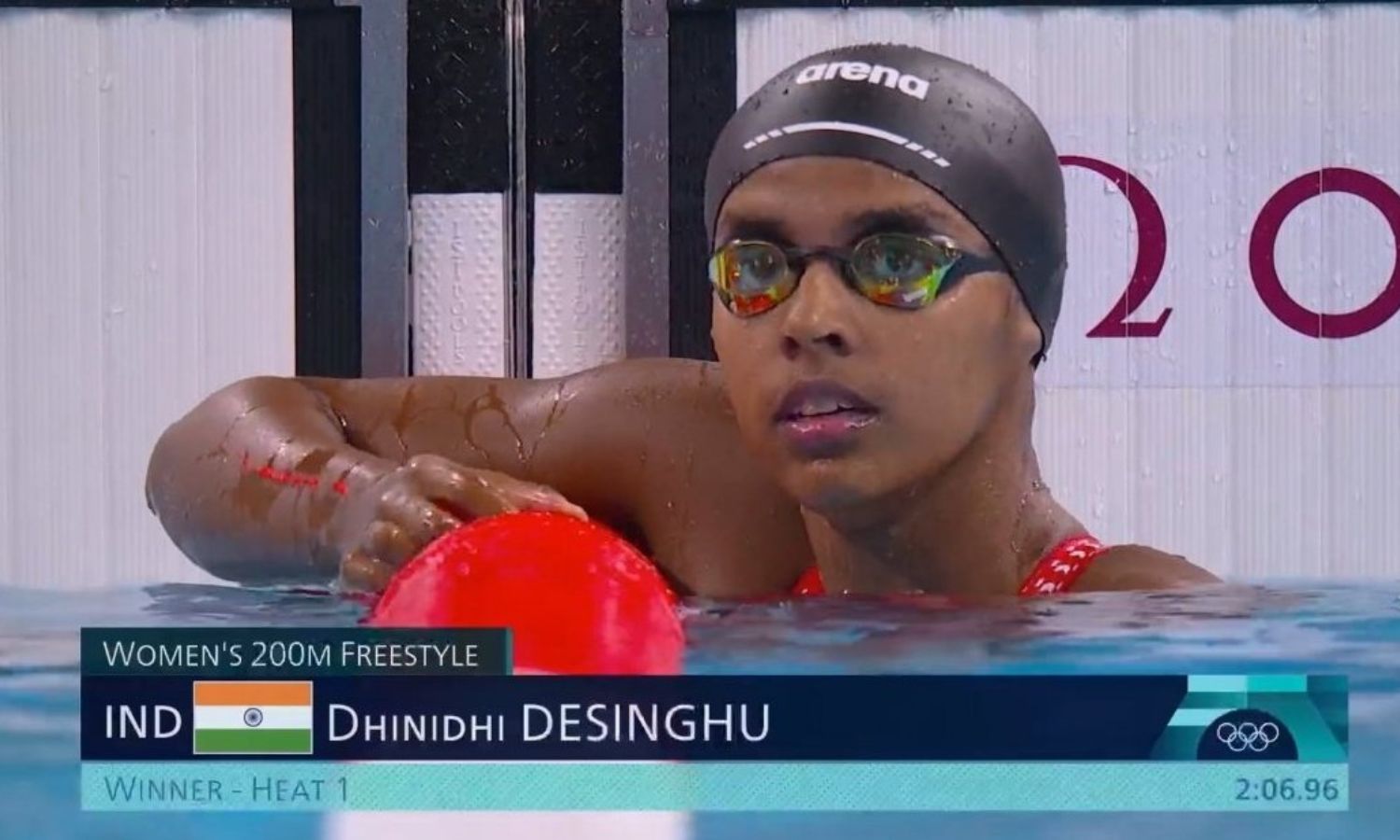When teenager Dhinidhi Desinghu stopped the clock at 2:09.96 to finish first in her women’s 200m freestyle heats on Sunday, chances are that the Indian swimming fraternity cheered in delight.
But as the rest of the heats played out and the finish times of competitors began improving, young Dhinidhi dropped lower down the pecking order. And when all the heats were completed, she was placed 23rd.
Meanwhile, Srihari Nataraj clocked 55.01s to finish second in his men’s 100m backstroke heats. The result put him in 33rd spot and out of semi-final contention.
So, what does this result mean for Indian swimming?
‘Big gap’
“The gap is quite big, to keep it simple,” said former Olympian Hakimuddin Habibulla, who represented India in the men’s 200 m freestyle at the 2000 Summer Olympics in Sydney.
The gap that he was alluding to was there for all to see on the big screen.
Australia’s Mollie O’ Callaghan topped the charts in the women’s 200m freestyle heats with an effort of 1:55.79, almost 15 seconds faster than Dhinidhi.
And in the men’s 100m backstroke, Hungary’s Hubert Kos clocked 52.78s. In comparison, Srihari was a little over two seconds behind and separated by thirty-two other swimmers.
“We are getting there – the gap is high in context of World records and Gold medals, but the gap is reducing in context to making qualification to the top 16 and then top 8,” said Hakim.
Srihari, having made the finals cut in several multi-event tournaments across the globe, is one such example.
Had the swimmer reproduced his best time of 53.77s, he would have placed 15th, enough to earn a semi-final spot. But sadly, that wasn’t to be.
For Hakim, who is actively involved in multiple development programs in the grassroots, creating more Srihari-like swimmers is a must.
“The idea is how to make 20 such Srihari’s so that we increase the probability of our medal chances. Men’s swimming has consistently gotten better, especially in the last 16 years,” Hakim said.
There is, however, plenty of hope.
Not all gloom and doom
That fact that a 14-year-old Indian girl won her heats at the Olympics augurs well for the sport at large in the country. But Hakim feels that she needs all the support she can get now.
“Dhindhi being so young, carries the responsibility to change that paradigm for women’s swimming in the country – she needs the appropriate support now.”
And things are changing for the sport across the country as well.
Several public pools are now being run by professional swimming academies and institutions, thereby providing a certain degree of organization to the sport. Also, the pools are getting better as well.
But Hakim says infrastructure alone will not solve the developmental problems.
“While the quality of infrastructure is improving in India, a top swimmer still needs to travel globally to get access to good competition.”
And this, according to Hakim, “increases the investment needed per swimmer and reduces the number of swimmers who can move forward.”
Financial backing, therefore, is inevitable for an Indian swimmer to become world class.
That said, with swimmers like Dhinidhi winning a heat at the Olympics, things are bound to get better in time.
“How to take a talent like this and take it to the next level and become a role model for many to follow is the next challenge,” Hakim concluded.
